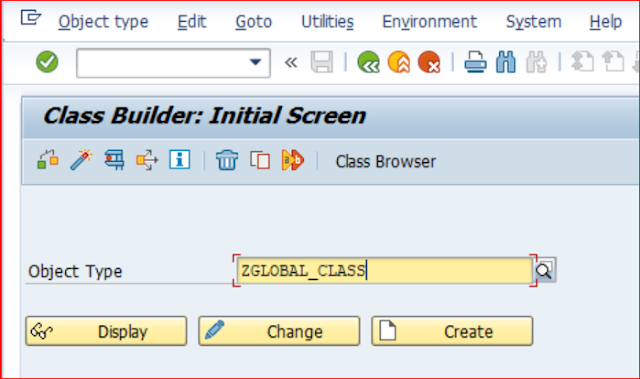Static Method VS Instance Method
Introduction:
- We will cover the following basic concepts:
- Creating a Global Class in SE24.
- Understand the basics of Methods.
- Understand the basics of 'Types of Methods'.
- Define and Implement a Static Method & an Instance Method.
- Call a Static and an Instance Method in the SE38 program.
- Bonus Point.
Lets Start:
- Choose 'Usual ABAP Class' and 'Final' Check Box.

2. Now let us understand the basics of Methods.
- Methods are just like Function Modules.
- Check out the below comparison that will help you to get a basic understanding of Methods.

3. Now let us understand the basics of 'Types of Methods' with a below simple comparison.

4. Now let us define and implement a Static Method & an Instance Method.
- Create METHOD_INSTANCE & METHOD_STATIC in Methods Tab.
- And set the level of Methods as Instance & Static respectively as shown below.

- To see how the generated code looks in the Public Section follow the below steps.
- Goto->Sections->Public section.

- We can see generated code as below.

- Create an implementation of the METHOD_INSTANCE as shown below.
- Similarly create an implementation for METHOD_STATIC as shown below.
- First let us call the Static Method METHOD_STATIC.
- We call METHOD_STATIC directly using the Class Component selector ( => ) symbol.
- There is no need to create an Object for the Static Method.
- Now Save, Check & Activate the Program. the program activates without any error.
- Execute the program, The method METHOD_STATIC gets called successfully and the WRITE statement inside the implementation of the method gets executed.
- Now let us code for the call of Instance Method METHOD_INSTANCE.
- Here we call the Instance Method just like we called our Static Method using Class Component Selector ( => ) symbol.
- As the error suggests we cannot call an Instance Method using Class=>Method.
- So we will create an Object with the class reference parameter LR_CLASS.
- Call the METHOD_INSTANCE using the Created Object as shown below.

- Now Save, Check & Activate the Program. the program activates without any error.
- Execute the program, The methods METHOD_STATIC & METHOD_INSTANCE get called successfully and the WRITE statement inside the implementation of the methods get executed.
- Now, we know the basics of Theoretical and Practical implementation of STATIC and INSTANCE Methods.
- Let us Try to Call the Static Method METHOD_STATIC using our created Object LR_CLASS. That is, call the Static Method using 'Object Component Selector' just like the Instance Method.
- Guess what? Surprisingly it works.
- Find the complete sample code below.
REPORT zglobal_class_methods1.
*Consume the methods of Class ZGLOBAL_CLASS
*Call the Static Method of the Class
zglobal_class=>method_static( ).
*Call the Instance Method of the Class
*Declare local variable concerning the class
DATA:lr_class TYPE REF TO zglobal_class.
*Create an object for the class
CREATE OBJECT lr_class.
*Cursor to Next Line
WRITE /.
*Call Method
CALL METHOD lr_class->method_instance.
*Call the Static Method of the Class using Created Object
*Cursor to Next Line
WRITE /.
*Cursor to Next Line
WRITE / 'Using Class OBJECT:'.
*Call Method
CALL METHOD lr_class->method_static.













Comments
Post a Comment